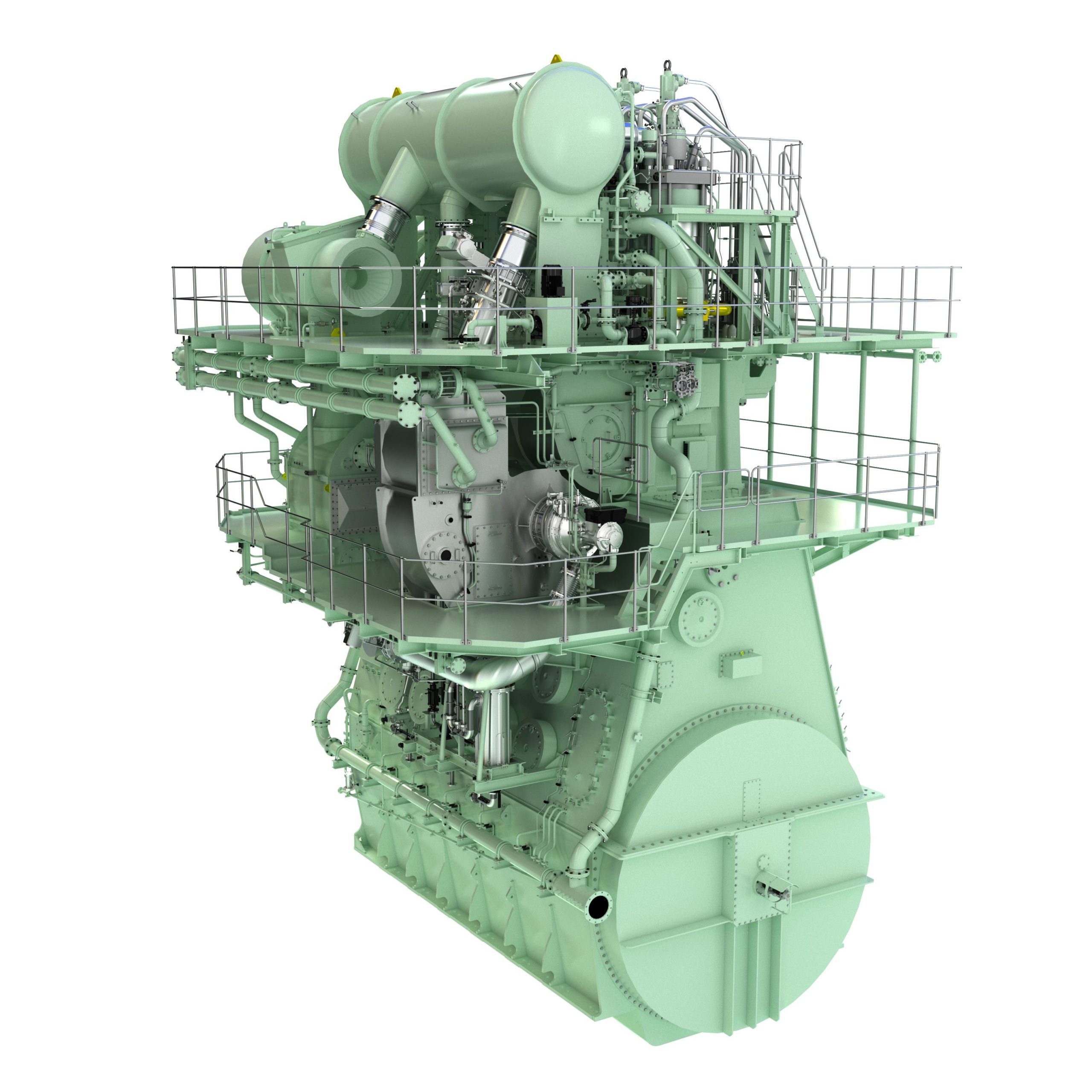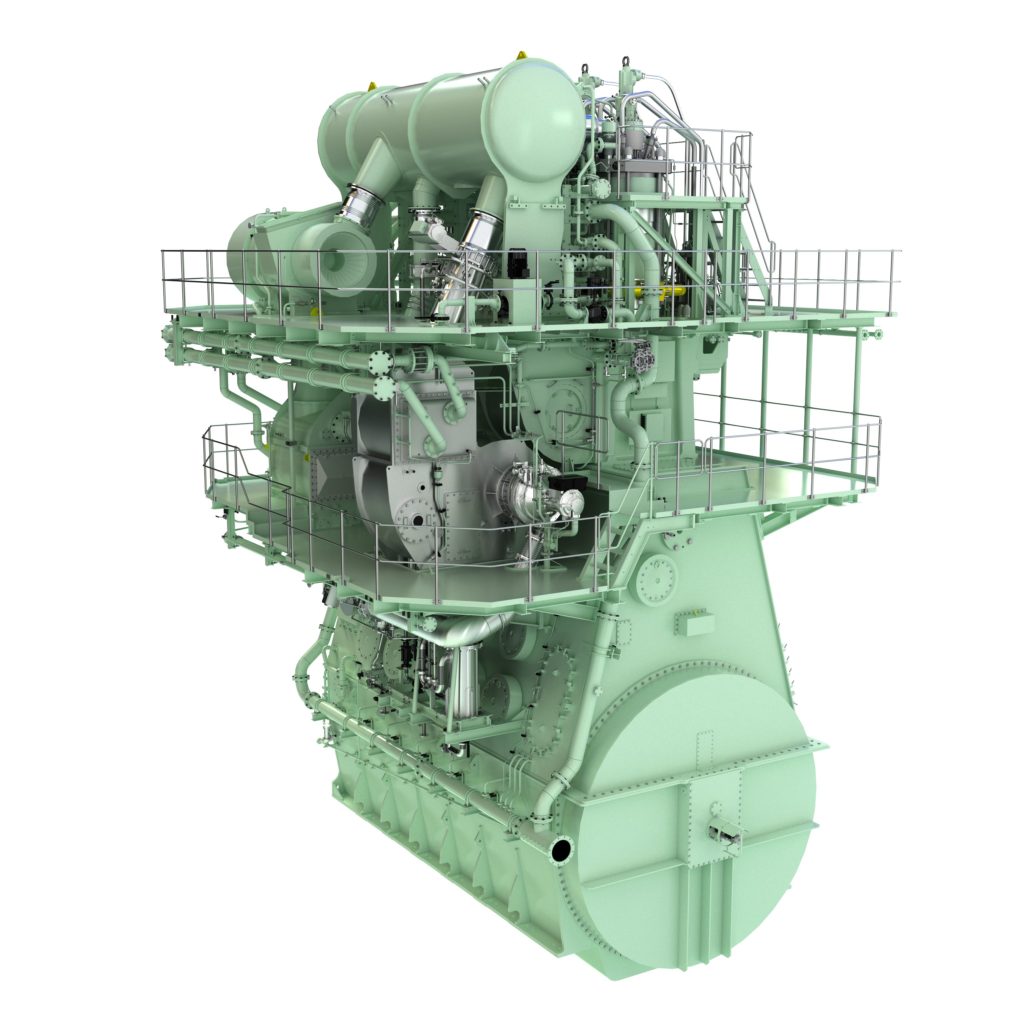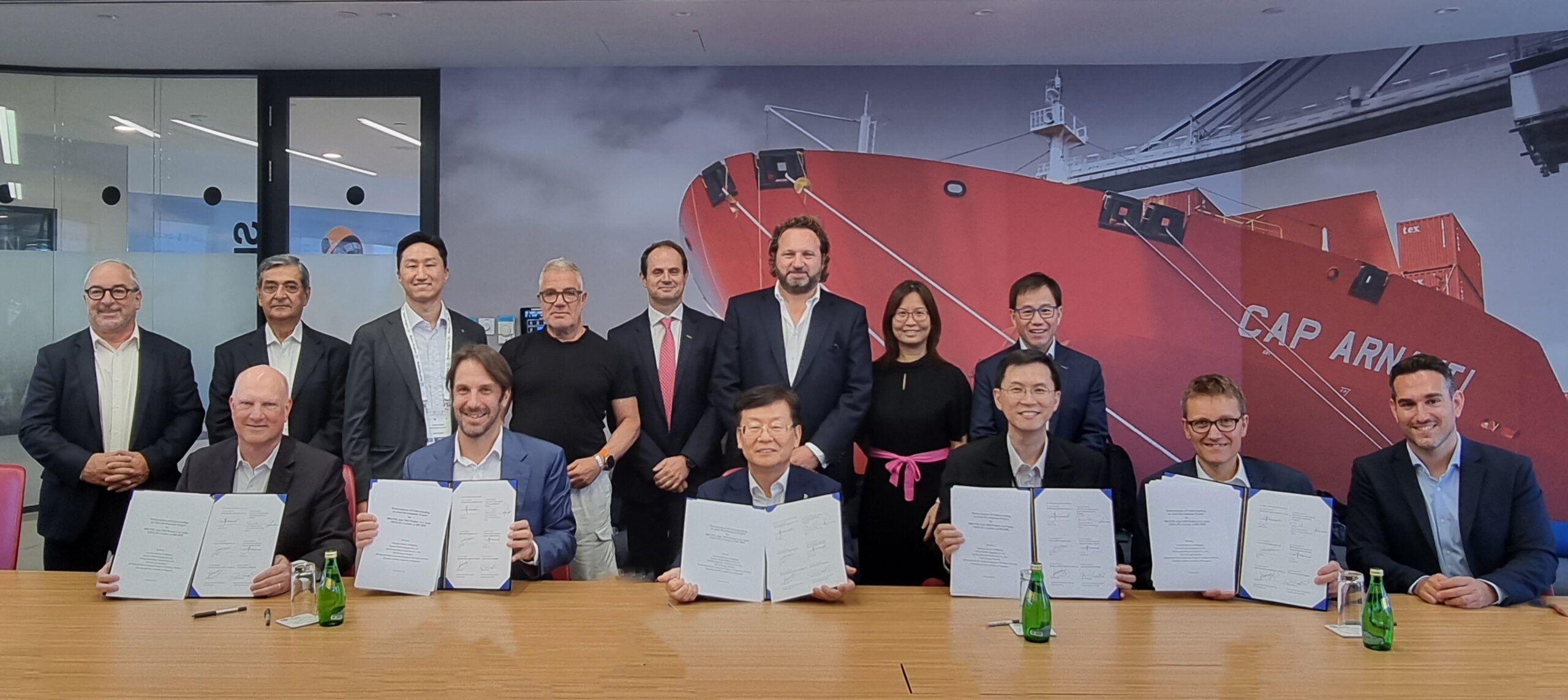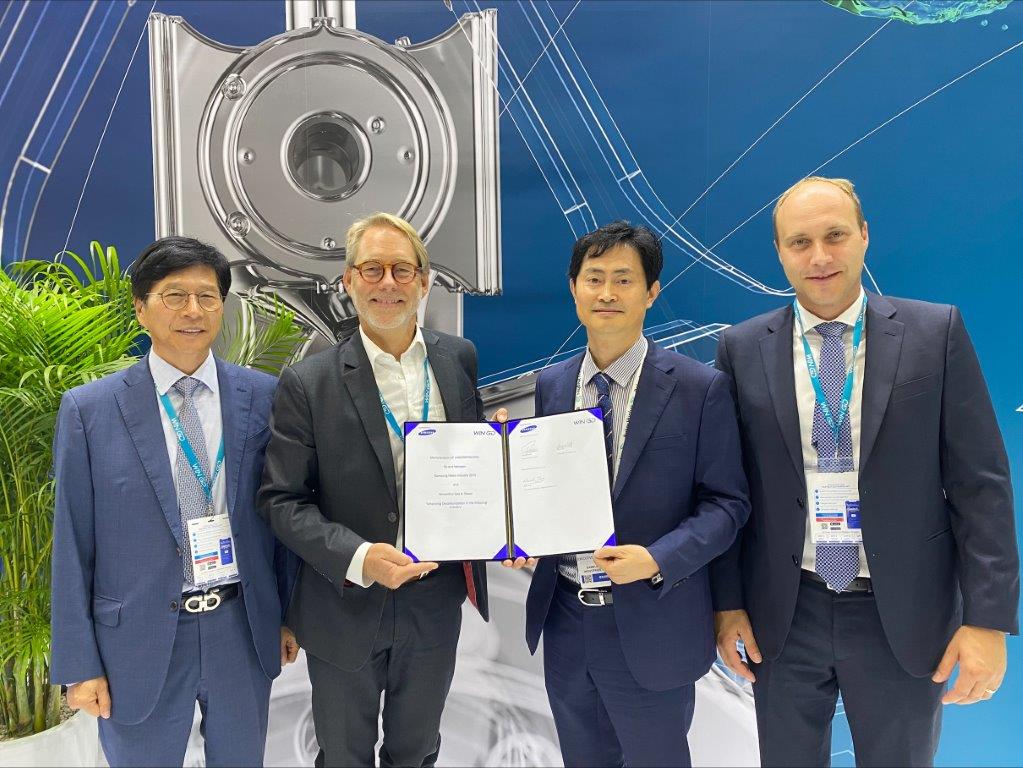The new ME-GA engine may be an LNG dual-fuel engine, but it has some pointers about the future as the engine maker focuses on its ammonia-fuelled engine for 2024
Having spent five years developing its new engine in Copenhagen and South Korea MAN ES has come out shouting about its performance and positioning in the market. It’s for LNG carriers mainly so is an LNG dual fuel engine, not perhaps what most people would expect from the world’s leading supper of engines for the maritime sector, but then again it does take time to develop, build and test a piece of engineering that is bigger than a house and will consume a tonne of fuel an hour.
This new engine uses the Otto cycle, as opposed to the other large two stroke engine of MAN’s the ME-GI engine, that was launched six years ago and uses the Diesel cycle. It is also low-pressure, demeaning gas is injected at a relatively low pressure compared to the Diesel cycle engines and is one reason MAN is selling this promoting this new engine as a capex saver for the flourishing LNG market (it said during the online launch that it sees about 70 LNG carriers on order every year).
MAN ES launched its new LNG dual fuel engine this week, with a demonstration of the test model the company has at its test facilities in Copenhagen, Denmark. It has been promoting the engine for a while and says it already has sales booked for LNG carrier newbuildings.
But also said it expects to have an ammonia powered engine on the market by 2024 and in its test and research centre the company now has two engines to enabling it to speed up its research work.
During the live demonstration MAN ES vice president and head of two-stroke business Bjarne Foldager, reiterated a long standing statement from the company that if a fuel is commercially attractive the company will commit itself to finding the technical solution to utilise that fuel.
It’s portfolio of two stroke engines already includes engines that can run off LPG, ethane and methanol.
The launch of this low pressure two stroke engine also puts MAN more directly up against WIN GD, the Chinese owned , Switzerland-based engine maker that already has a series of Otto cycle dual fuel engines on the market.
(Both companies license out their engine designs to manufacturers around the world who construct the engines in or near shipbuilders).
It’s the recirculation that makes the difference
But while this engine may be an LNG/low sulphur fuel oil engine there are some key differences from the other family of LNG dual fuel engines the company already has on the market.
Firstly this is an engine based on the Otto combustion cycle, and secondly, something MAN played up a lot during its recent digital launch this week, it comes with optional exhaust gas recirculation, a technology that it said is growing in popularity and when used on an engine burning methane (Which LNG is basically) has some shown some surprising benefits.
MAN recognises that an Otto-cycle engine produces more methane slip than a diesel cycle engine (even though engine makers have for years been working on reducing methane slip), but by recirculating the exhaust back into the engine air input ahead of combustion the unburned methane gets another chance to combust. EGR was developed primarily to reduce emissions from an engine in order to help meet the tier III NOx emissions requirements. These are the tough limits on newbuilding’s that began to come not force in five years ago. While LNG has no sulphur it still has NOX emissions, so newbuilding required to be compliant will need something to help them do so. The problem though with the ME GA dual fuel engine is that even with the EGR it will not be tier three compliant when burning liquid hydrocarbons- like low sulphur diesel fuels, so a selective catalytic converter or other solution will be needed by owners who think operational profiles can not rely on LNG all the time.
EGR also improves fuel consumption performance by dropping the temperature, improving knocking, by giving a better all-round combustion in the ignition chamber of the cylinder. Otto cycle engines also need a pilot fuel to help ignite the gas in the cylinder during the engine cycle. MAN says it is 0.55 f the fuel consumption.




































